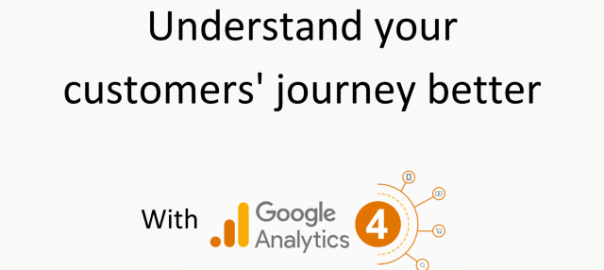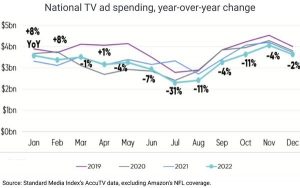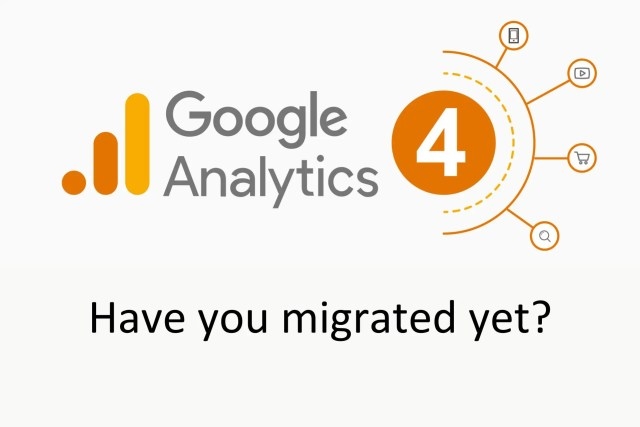
You don’t just want data; you want actionable insights. And like most businesses, you’ve most likely been relying on Google’s Universal Analytics (UA) for years to gather them.
UA is a powerful tool for measuring, analyzing, and optimizing your business’s online presence. The data it provides allows you to make vital decisions, improve your marketing initiatives, and enhance your customer journey. But some significant changes are coming.
On July 1, 2023, Google Analytics 4 (GA4) will replace Google’s UA. Meaning that UA’s complete feature list for analysis and reporting will no longer be available. While you will still be able to access reports and insights generated from January through June 2023, you will not be able to generate reports and draw actionable insights from it July onwards. It is crucial to have your GA4 tracking set up before this date.
This blog gives you everything you need to know about GA4; from what is it, what’s new in it, how is it different from UA, its advanced reporting capabilities, and its benefits. But before we get into the details, let’s begin with why you need it in the first place.
Why You Need GA4
GA4 offers several features and capabilities that help you achieve better customer experiences and higher conversions to reach revenue goals.
Comprehensive user insights
GA4 provides comprehensive insights into user behaviour and preferences. It lets you understand how users interact with their websites, apps, and other digital channels. This understanding helps optimize the customer experience by identifying pain points, improving usability, and tailoring content to meet user needs.
User journey analysis
Analyze the user journey across multiple touchpoints and devices. It helps identify the most effective marketing channels, content, and interactions contributing to conversions. By understanding the user journey, you can optimize your marketing strategies and allocate resources effectively to drive higher conversions and revenue.
Advanced segmentation
You’ll benefit from advanced segmentation capabilities, allowing you to create audience segments based on specific criteria such as demographics, behaviour and interests. These segments help deliver personalized experiences, targeted marketing campaigns, and relevant content to different user groups. By tailoring experiences based on segmentation, you can improve customer satisfaction and increase conversions.
Conversion tracking and optimization
GA4 provides robust conversion tracking features. It allows you to set up and track specific conversion goals, such as completed purchases, form submissions, or other vital actions. By analyzing conversion data, you can identify bottlenecks, optimize funnels, and make data-driven improvements to achieve higher conversion rates and revenue goals.
Machine learning insights
GA4 automatically incorporates machine learning and AI capabilities to surface valuable insights automatically. It helps you identify trends, anomalies, and opportunities within your data. These AI-driven insights enable you to make informed decisions, optimize marketing strategies, and deliver a better customer experience to drive higher conversions.
E-commerce tracking and analysis
For businesses engaged in e-commerce, GA4 offers robust e-commerce tracking features. It allows you to track product performance, revenue, average order value, and other e-commerce-specific metrics. This data helps optimize product offerings, pricing, and marketing strategies to drive higher revenue and conversions.
By leveraging the insights and features provided by GA4, you can enhance the customer experience, optimize conversions, and reach revenue goals. It enables you to make data-driven decisions, tailor your marketing efforts, and create personalized experiences that resonate with your target audience.
What is GA4?
GA4 is the latest version of Google Analytics. It offers exciting new features that provide valuable insights into how users interact with your website(s) and app(s) and allows you to evaluate performance.
You can track and understand user engagement across the multiple devices and platforms your customers visit you on in one reporting view.
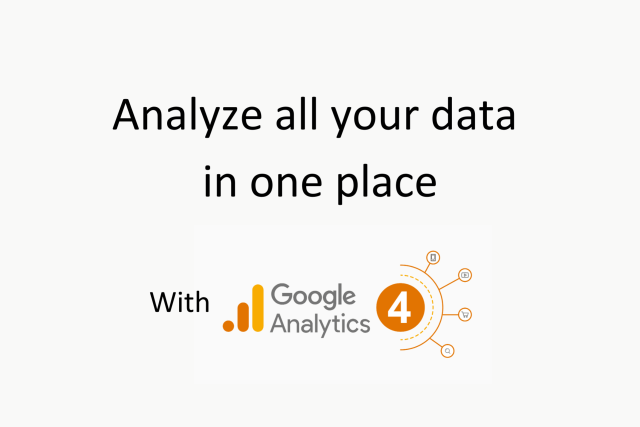
What’s new in GA4?
GA4 offers several key features and changes compared to its predecessor, UA. It offers advanced tracking capabilities, more intelligent insights, improved privacy features, and a more user-friendly interface, making it a powerful analytics tool for businesses seeking deeper insights into user behaviour and optimizing their digital properties.
Here are some of the significant upgrades featured in GA4:
All your data in one place
In the past, to measure website performance you needed to set up UA. If you also had an app, you needed to set up Firebase separately. Then, you would need to integrate both these reports using a different tool to gather actionable insights. It was time consuming and prone to human error.
GA4, on the other hand, can measure your apps and websites (or both if you have both) in same view: All your data will live in one place.
Enhanced user journey tracking
Gain a more comprehensive view of the user journey across devices and platforms. GA4 offers improved cross-device tracking, allowing you to understand how users interact with your websites or apps on different devices. This feature enables a more accurate analysis of user behaviour and engagement across the customer journey.
Event-driven tracking and flexibility
GA4 is built around an event-driven data model. It emphasizes tracking user interactions or events that impact your business goals, providing greater flexibility in capturing and analyzing specific actions or behaviours.
Smarter insights with AI
Leverage the power of AI. GA4 incorporates machine learning and AI capabilities to provide more thoughtful insights. It automatically surfaces valuable insights and trends in the data, helping you identify opportunities, patterns, and anomalies more efficiently. This saves time and empowers you to make data-driven decisions based on actionable insights.
Improved data privacy and compliance
As more data protection laws are introduced, data privacy is more essential than ever. GA4 emphasizes user privacy and data protection. It is designed to align with evolving privacy regulations, such as the General Data Protection Regulation (GDPR) and the California Consumer Privacy Act (CCPA). GA4 offers features that provide more granular control over data retention and processing.
Simplified reporting and analysis
You’ll find a more intuitive and user-friendly interface for reporting and analysis. GA4 offers new data visualization options and pre-built dashboards, making understanding and interpreting data easier. These reporting features are more user-centric and provide actionable insights without requiring complex configuration.
Future-proofing and migration support
As the latest version of Google Analytics, GA4 is expected to receive ongoing updates, improvements, and new features. By transitioning to GA4, you’re future proofing your analytics setup and ensuring compatibility with upcoming enhancements.
GA4 Versus UA
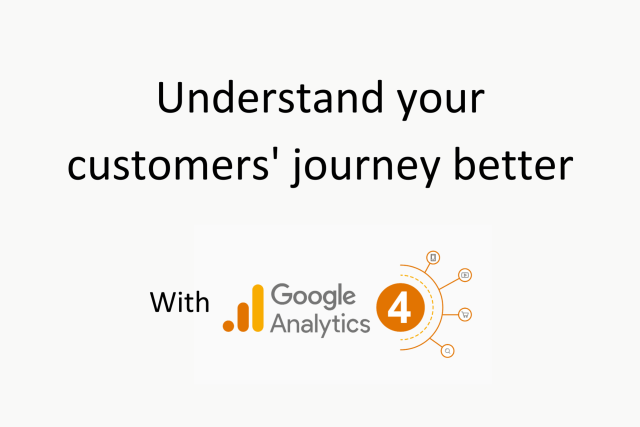
Today’s customers expect to be able to interact with a business at their own convenience. Let’s say they research your business on their phone while at a coffee shop. They’re interrupted and save the buying process for later when they are home on their laptop. Tracking this behaviour was challenging with UA.
GA4 de-duplicates users across data from different devices. This new feature provides cross-device tracking and reporting. You can now understand how users engage with you across devices, from initial touchpoints on one device to subsequent interactions on other devices.
This shift in tracking allows you to gain insights into your customer journeys to predict their needs and provide a seamless experience. It is not about waiting for them to come to you. It is about being proactive and making life easier for them.
How is this shift possible? UA groups data by sessions. A session is a user’s interaction with your website during a given period, and any interactions conducted by the same user after said time period is measured under a new session. These sessions formed the foundation of reporting.
With GA4, Google has shifted to an event-based model. You can still see session data, but interactions are classified as events. Events provide insights into what’s happening on your site, such as page views, button clicks, user actions, or system events. Meaning that even if there is a break in a session, or if interactions are conducted from different devices, they’re still attributed to the same user.
The Benefits of GA4
You can now ensure your analytics is adaptable to the constantly shifting digital environment. GA4 will scale with your business and allow you to measure across devices and platforms.
Scalability: As your business grows, so will the ways that customers can interact with you. GA4 measures and unifies data, giving you complete, relevant, and timely knowledge of your customer journey.
Adaptability: With its responsible and durable measurement capabilities, GA4 empowers businesses to achieve long-term success while prioritizing user privacy.
AI-powered insights: Get more frictionless insights from your data. GA4 leverages the power of machine learning, providing predictions to help improve your marketing initiatives.
GA4’s Advanced Reporting Capabilities
GA4 has advanced reporting features to help you gain better insights and analysis.
One of the most exciting features is Exploration, which gives you greater flexibility and freedom when analyzing your data. With techniques like funnel exploration, path exploration, and free-form exploration, you can uncover patterns and trends in your data more intuitively and interactively.
The Analysis Hub is another excellent feature of GA4, providing a centralized location for advanced analysis and reporting. Whether you need to explore, segment overlap, analyze user lifetime, or something else, the Analysis Hub offers a range of analysis techniques to help you gain deeper insights and answer specific business questions.
Funnel Analysis provides advanced capabilities for analyzing and optimizing conversion funnels. With options for visualization, conversion rate calculations, and segmentation, you can gain more granular insights into user drop-off points and identify bottlenecks to improve the conversion process.
Path Analysis is another powerful tool in GA4, allowing you to analyze users’ different paths on your websites or apps. By identifying popular navigation patterns and understanding the effectiveness of different user journeys, you can optimize the user experience and identify high-value user paths.
User Lifetime Analysis delivers valuable insights into user behaviour and engagement over time. By analyzing metrics like lifetime value, retention rates, and user churn, you can better understand user loyalty, identify opportunities for re-engagement, and optimize marketing strategies based on user lifetime value.
Finally, GA4 allows you to create custom reports and dashboards tailored to your needs. With a range of metrics, dimensions, and visualizations, you can build personalized reports and dashboards that align with their KPIs and help them achieve their objectives.
GA4’s advanced reporting capabilities empower you to conduct in-depth analysis, gain actionable insights, and make data-driven decisions. Whether you’re looking to optimize your marketing efforts, improve user experiences, or achieve other business goals, GA4 has the flexibility and range of features you need to succeed.
Migrate to GA4 Now
If you haven’t already begun your setup and migration, you must begin the transition now to continue relying on a data-driven approach.
Currently GA4 and UA coexist. July onwards GA4 will process and report on current data, while UA will continue to collect data till the end of the year 2023 without any reporting capabilities. This will enable you to adopt GA4 at your own pace and ensure a smooth transition.
If you aren’t sure where or how to begin, our team of experts can assist you with every step, from planning and implementation to training and support. Contact us today to learn more about how we can help you transition to GA4.
The post Everything You Need to Know | GA4 Edition appeared first on Search Engine People Blog.
(3)
